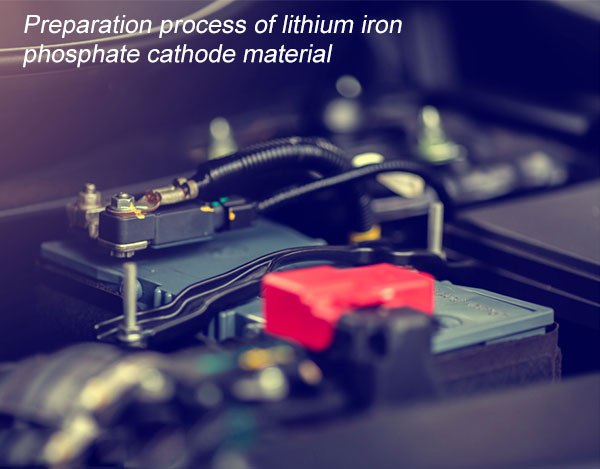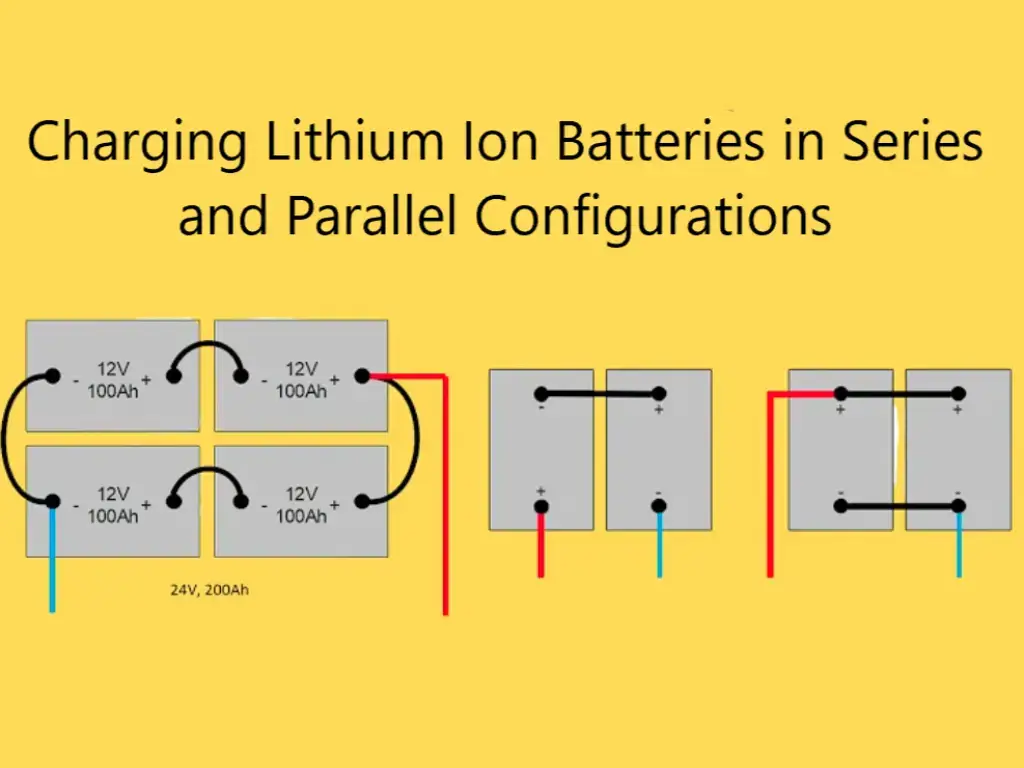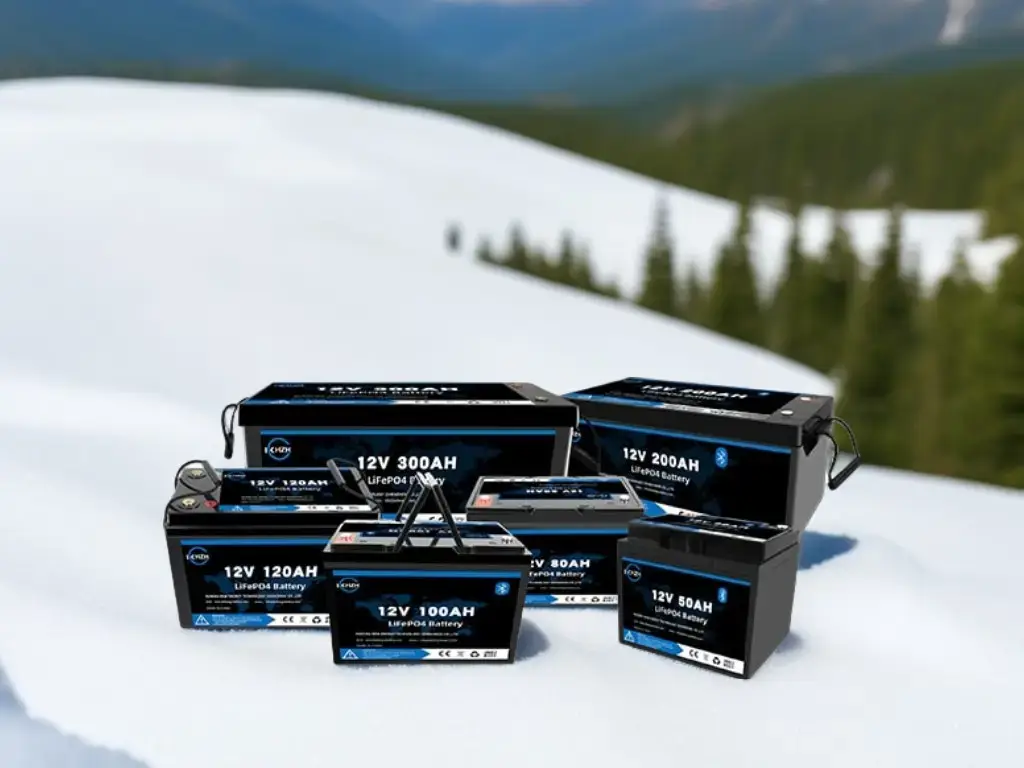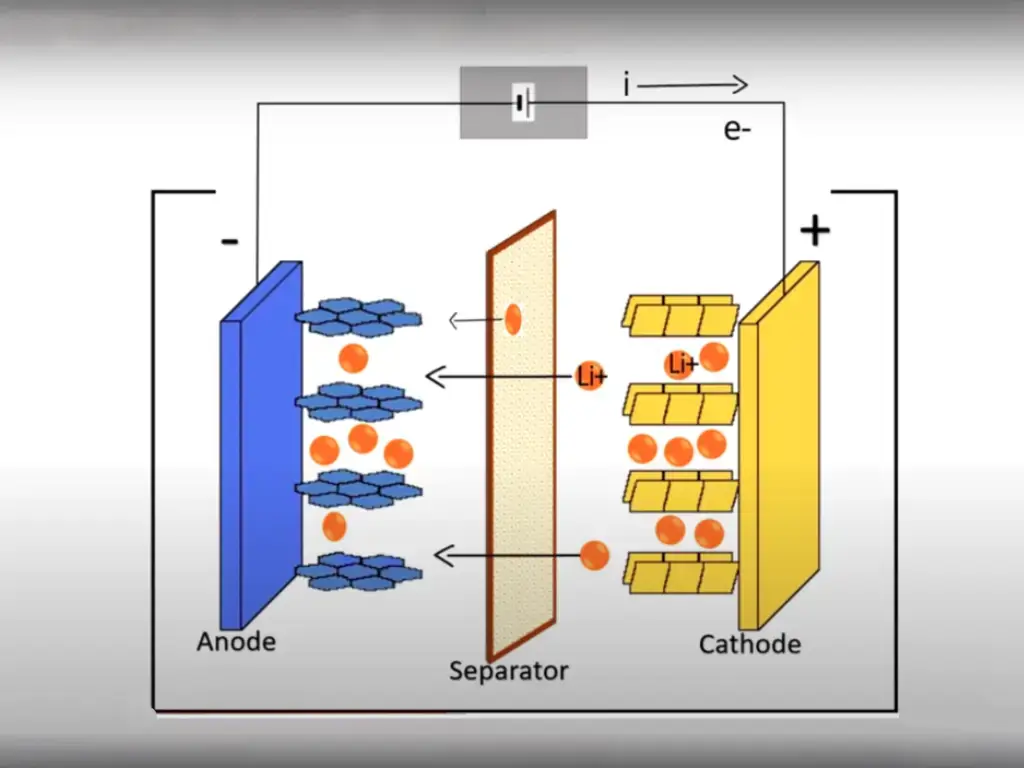Compared with traditional lead-acid batteries, lithium iron phosphate has high energy density, its theoretical specific capacity is 170 mah/g, and lead-acid batteries is 40mah/g; high safety, it is currently the safest cathode material for lithium-ion batteries, Does not contain harmful metal elements; long life, under 100% DOD, can be charged and discharged more than 2000 times; good charging performance, low price and environmental protection.
As a high-performance secondary green battery, lithium-ion battery has high voltage, high energy density (including volume energy, mass specific energy), low self-discharge rate, wide operating temperature range, long cycle life, environmental protection, It has the advantages of no memory effect and can be charged and discharged with a large current.
The improvement of the performance of lithium-ion batteries is largely determined by the improvement of the performance of electrode materials, especially the cathode materials.
At present, the most widely studied cathode materials are licoo2, linio2 and limn2o4, etc. However, due to the toxicity of cobalt and limited resources, the preparation of lithium nickelate is difficult, and the poor cycle performance and high temperature performance of lithium manganate restrict their application and development.

Therefore, the development of new high-energy and inexpensive cathode materials is crucial for the development of lithium-ion batteries.
The performance of lithium iron phosphate
(1) High energy density:
Its theoretical specific capacity is 170 mah/g, and the actual specific capacity of the product can exceed 140 mah/g (0.2C, 25°C);
(2) Security:
It is the safest cathode material for lithium-ion batteries at present; it does not contain any heavy metal elements that are harmful to the human body;
(3) Long life:
Under the condition of 100% DOD, it can be charged and discharged more than 2000 times. Reason: lithium iron phosphate has good lattice stability, and the insertion and extraction of lithium ions have little effect on the lattice, so it has good reversibility. The disadvantage is that the electrode ion conductivity is poor, it is not suitable for charging and discharging of large current, and it is hindered in application. Solution: The electrode surface is coated with conductive material and doping is used to modify the electrode.
The service life of a lithium iron phosphate battery is closely related to its use temperature. Too low or too high use temperature will cause great hidden dangers in its charging and discharging process and use process. Especially in the use of electric vehicles in northern China, in autumn and winter, the lithium iron phosphate battery cannot supply power normally or the power supply is too low, and its working environment temperature needs to be adjusted to maintain its performance. At present, the domestic solution to the constant temperature working environment of lithium iron phosphate batteries needs to consider the space limitation. The more common solution is to use aerogel felt as the insulation layer.
(4) Charging performance: Lithium battery with lithium iron phosphate cathode material can be charged at a high rate, and the battery can be fully charged within 1 hour at the fastest.
The production process of lithium iron phosphate
1. Iron phosphate drying to remove water
First weigh the materials, add deionized water, fully mix and stir in the mixing tank, and the ingredients are mainly iron phosphate, lithium carbonate and other materials. Not to mention lithium carbonate, it is our main source of lithium. It is an inorganic compound with the chemical formula Li2CO3. It is a colorless monoclinic crystal or white powder with a density of 2.11g/cm3 and a melting point of 723°C. Acid, slightly soluble in water, more soluble in cold water than in hot water, insoluble in alcohol and acetone. And our phosphorus and iron are mainly derived from iron phosphate, also known as high iron phosphate, iron orthophosphate, molecular formula is fepo4, is a white, off-white monoclinic crystal powder, molar mass: 150.82, soluble in sulfuric acid, insoluble in other acids , insoluble in water, acetic acid and alcohol.
(1) Drying process in the drying room: the stainless steel saggar is filled with raw iron phosphate and placed in the drying room, and the temperature of the drying room is adjusted to 220±
Dry at 20°C for 6-10 hours. The material is discharged and transferred to the next process to be sintered in a rotary kiln.
(2) Rotary furnace sintering process: After the rotary furnace is heated up and nitrogen is passed to meet the requirements, the feed (from the drying room of the previous process) is fed.
Material), adjust the temperature to 540±20℃, and sinter for 8-12 hours.
2. Grinder mixing process
During normal production, two grinders are put into operation at the same time, and the specific feeding and operation of the two equipment are the same (one can run alone during debugging). The procedure is as follows:
(1) Grinding of lithium carbonate: Weigh 13Kg of lithium carbonate, 12Kg of sucrose, and 50Kg of pure water, and mix and grind for 1-2 hours. Pause.
(2) Mixing and grinding: Add 50Kg of iron phosphate and 25Kg of pure water to the above mixed solution, and mix and grind for 1-3 hours. Stop the machine, and transfer the material to the disperser. Sampling to measure particle size.
(3) Cleaning: Weigh 100Kg of pure water, clean the grinder in 3-5 times, and transfer all the lotion to the disperser.
3. Material dispersing process of dispersing machine
2.2 Transfer about 500Kg of material (including the material for cleaning the grinder) mixed by two grinders (or mixed twice by one grinder) into the disperser together, then add 100Kg of pure water, adjust the stirring speed, and fully stir and disperse 1 -2 hours, waiting to pump into the spray drying equipment.
4. Spray drying process
The mixed rubber is sprayed out by pressure, and becomes the desired particles after passing through the spray dryer. A spray dryer is a device that can complete drying and granulation at the same time. According to the process requirements, the pressure, flow rate and the size of the nozzle hole of the liquid pump can be adjusted to obtain the required spherical particles in a certain size ratio.
The working principle is that after the air is filtered and heated, it enters the air distributor at the top of the dryer, and the hot air enters the drying chamber evenly in a spiral shape. The feed liquid passes through the high-speed centrifugal atomizer at the top of the tower body, and is sprayed (rotating) into extremely fine mist-like liquid droplets, which can be dried into finished products in a very short period of time in co-current contact with hot air. The finished product is continuously output from the bottom of the drying tower and the cyclone separator, and the exhaust gas is evacuated by the induced draft fan.
(1) Adjust the inlet temperature of the spray drying equipment to 220±20°C, the outlet temperature to 110±10°C, and the feed rate to 80Kg/hr. Then, start feeding and spray drying to obtain dry materials.
(2) The solid content can be adjusted to 15%~30% according to the spray particle size.
Hydraulic press material briquetting block charging Adjust the pressure of the hydraulic press to 150 tons and 175 tons respectively, load the spray-dried material into the mold, keep the pressure for a certain period of time, and compact it into a block. Loaded into the saggar and transferred to the push-plate furnace. At the same time, several sets of bulk samples were put in for comparison with the compressed material.
5, push plate furnace sintering
Using lithium battery roller furnace to sinter the dried material, the advanced roller furnace on the market adopts advanced infrared technology and advanced furnace material, which improves the thermal efficiency of the equipment; adopts advanced temperature control technology to ensure the temperature control. Accuracy; using mature furnace body design technology to ensure the uniformity of furnace temperature; using scientific and reasonable transmission mechanism to ensure smooth and stable operation of the push plate. First raise the temperature, pass nitrogen gas to the atmosphere requirement below 100ppm, push the saggar into the push-plate furnace, press the heating section at 300-550°C for 4-6 hours; the constant temperature section at 750°C for 8-10 hours; and the cooling section for 6-8 hours. ,Discharge.
6. Rolling ultra-fine grinding
The sintered material is pulverized using jet mill equipment. The working principle of the jet mill: the compressed air is accelerated into a supersonic airflow through the Laval nozzle and then injected into the crushing area to make the material fluidized (the airflow expands and collides with each other in the form of fluidized bed suspension and boiling), so each particle has the same particle size. State of motion. In the crushing zone, the accelerated particles collide and crush each other at the intersection of the nozzles. The pulverized material is transported to the classification area by the upward air flow, and the fine powder that meets the particle size requirements is screened out by the horizontally arranged classification channel, and the coarse powder that does not meet the particle size requirements is returned to the pulverizing area to continue to be pulverized. The qualified fine powder enters the high-efficiency cyclone separator with the airflow to be collected, and the dust-laden gas is filtered and purified by the dust collector and then discharged into the atmosphere.
7. Mixed grading
After mixing the pulverized lithium iron phosphate powder, it is classified according to the particle size. According to our needs, the particles that are too large are reclassified. Powder mixing equipment is often used in the pharmaceutical industry. Common mixing equipment includes double helical cone mixer, horizontal gravityless mixer, and horizontal coulter mixer. The ground material is then screened and packaged. 5Kg, 25Kg two specifications.
8. Baking
Bake the qualified lithium iron phosphate powder to remove moisture. Generally, a double cone dryer is used. The working principle is as follows: the double-cone dryer is a double-cone rotary tank. In the vacuum state of the tank, steam or hot water is passed into the jacket for heating, and the heat contacts the wet material through the inner wall of the tank. The water vapor evaporated after the wet material absorbs heat is pumped away by the vacuum pump through the vacuum exhaust pipe. Because the tank body is in a vacuum state, and the rotation of the tank body makes the material constantly turn up and down, inside and out, so the drying speed of the material is accelerated, the drying efficiency is improved, and the purpose of uniform drying is achieved.
9. Inspection and storage
After drying, the powder is tested and qualified, and then the finished product packaging equipment is used. Product inspection, labeling and storage. Including: product name, inspector, material batch, date.
Keheng Self-Heating Battery
100AH 12V Low Temperature Heating Enable
Keheng New Energy’s Range Of Products
DEEP CYCLE BATTERIES With BMS(lifepo4 Lithium Battery)
Low Temperature 24V 60AH Deep Cycle LiFePO4 Battery




